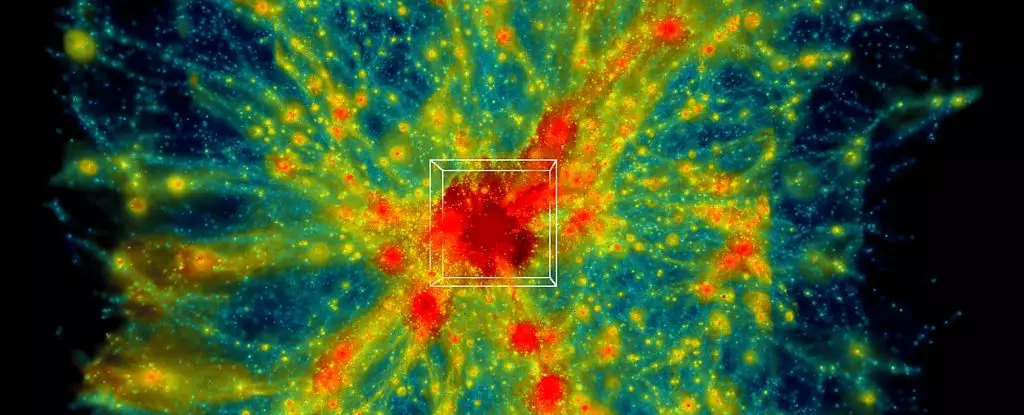The dawn of a new era in astrophysics has arrived, courtesy of a groundbreaking simulation conducted by the Frontier supercomputer at Oak Ridge National Laboratory. In November 2024, this powerful computational engine undertook the largest astrophysical simulation to date, encompassing a staggering volume of the expanding universe that measures over 31 billion cubic megaparsecs. The ambitious project, aptly named ExaSky, stands as a monumental achievement in computational astrophysics and promises to deliver compelling insights about the universe’s evolution and the enigmatic nature of dark matter.
Astrophysicists and cosmologists are excited by the project’s potential to unravel the complexities of cosmic phenomena. With the fundamental understanding that the universe comprises both dark matter—which is believed to interact solely through gravity—and conventional atomic matter, the ExaSky project aligns with the need to simulate a plethora of physical interactions. As physicist Salman Habib from Argonne National Laboratory explains, the project requires taking into account a myriad of factors ranging from gravitational influences to the behavior of hot gases, the formation of stars, and the intricate development of galaxies, forming a dynamic model of these cosmic interactions.
Simulations are indispensable tools for astrophysicists attempting to decode the history of the universe. By simulating cosmic phenomena, researchers can analyze astronomical events that span billions of years in a fraction of the time. While observing cosmic evolution through telescopes provides snapshots of time, it is the simulations that allow scientists to manipulate those timelines—speeding up, slowing down, or even reversing events to study their implications. However, this process is far from simple due to the complexity and vastness of space, necessitating advanced mathematics and leading-edge technology.
Despite the breakthroughs in computational power exemplified by the Frontier supercomputer, significant challenges remain. Previous simulations had to omit various factors that contribute to the overall hydrodynamic picture. As Habib elucidates, attempts to capture expansive regions of the universe, like those surveyed by the Rubin Observatory in Chile, are daunting undertakings. They often necessitate simplifications, usually focusing solely on gravitational influences rather than a comprehensive portrayal that would include the myriad of other forces at play.
The success of the ExaSky simulation is the culmination of years of hard work refining algorithms and mathematical models alongside significant hardware advancements. The optimization of the Hardware/Hybrid Accelerated Cosmology Code allowed the researchers to run these vast simulations at scales previously deemed inconceivable. The improvements in computational architecture were pivotal; with the Frontier supercomputer crowned as the fastest in the world at the time of the simulation, the team harnessed unprecedented processing capabilities to achieve their ambitious goals.
However, the scale of the ExaSky simulation only captures a mere 0.001 percent of the proposed model of the universe. Nonetheless, astrophysicist Bronson Messer from the Oak Ridge National Laboratory emphasizes the significance of even this minuscule fraction, as it can be directly compared to modern observational data gleaned from advanced surveys. The implications of such comparisons could indeed reshape our understanding of cosmic structures and dynamics, providing a window into complexities that have eluded researchers for years.
As the ExaSky project moves forward, excitement is palpable within the scientific community. The results are expected to facilitate a deeper understanding of various cosmic phenomena and the properties of dark matter, one of the most mysterious substances in our universe. With the insights gained from this monumental simulation, researchers hope to address fundamental questions about the universe’s past, present, and possible futures. Ultimately, the ExaSky project exemplifies the intersection of technology, astrophysics, and curiosity, pushing the boundaries of what we know about the universe and leading to potentially transformative discoveries on our cosmic journey.

Leave a Reply